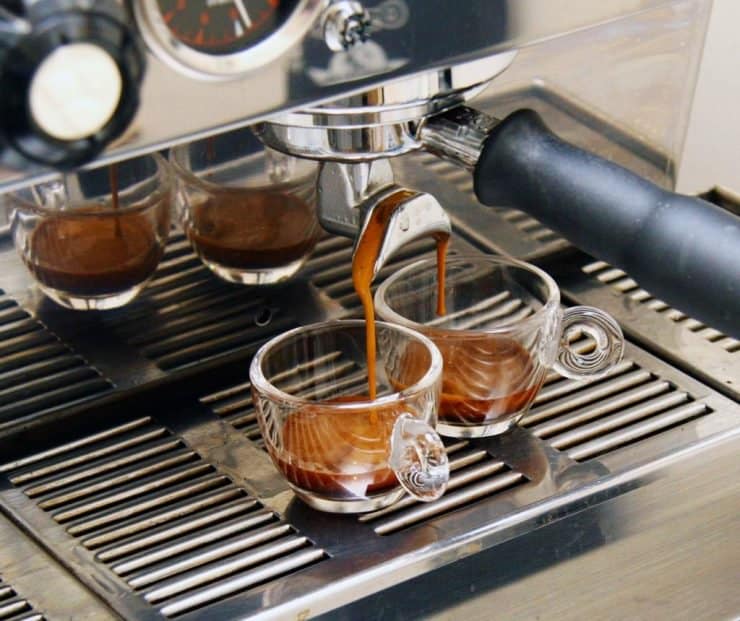The Science Behind Coffee Developing: Just How Temperature and Time Affect Your Drink
Understanding the scientific research behind coffee brewing exposes that temperature and time are not mere variables yet critical aspects that dictate the drink's flavor profile and general high quality. The ideal developing temperature level normally drops in between 195 ° F and 205 ° F, while the period of removal differs substantially across different techniques. This interplay of elements can result in a cup that is either wonderful or frustrating. As we explore the nuances of these aspects, the concern emerges: just how can one efficiently balance temperature and time to achieve that ideal mixture?
The Chemistry of Coffee Extraction
The chemistry of coffee removal explores the detailed processes that transform raw coffee beans into the aromatic drink taken pleasure in worldwide. This transformation primarily involves the solubility of various substances existing in the beans, which are influenced by elements such as work dimension, water quality, and the brewing method used.
Throughout the brewing process, warm water works as a solvent, extracting soluble compounds, consisting of caffeine, acids, sugars, and lipids, from the coffee premises. Each substance contributes to the flavor profile, scent, and body of the last drink. Acids are responsible for brilliant and appetizing notes, while oils add to an abundant mouthfeel.
The removal procedure is not consistent; different compounds liquify at different rates. The preliminary phases of brewing extract acids and sugars, resulting in a pleasurable acidity, while long term removal can lead to anger because of over-extraction of unfavorable substances. Understanding these chemical communications is vital for optimizing brewing techniques, as the equilibrium in between extraction time and water temperature can considerably affect the general quality of the coffee. Eventually, grasping the chemistry of coffee removal is key to attaining a tasty and all-around cup.
Suitable Brewing Temperatures
Locating the ideal brewing temperature level is essential for unlocking the complete possibility of coffee tastes and aromas - coffee brewing methods. Study suggests that the optimal array for brewing coffee exists in between 195 ° F to 205 ° F(90 ° C to 96 ° C) Within this range, the extraction procedure successfully liquifies the desirable soluble substances in coffee beans, resulting in a delicious and well balanced mug
Brewing at lower temperature levels, such as below 195 ° F(90 ° C ), might result in under-extraction, producing an acidic and weak brew with low-key flavors. Alternatively, developing at temperature levels going beyond 205 ° F(96 ° C) can result in over-extraction, producing a severe and bitter taste due to the too much dissolution of unwanted substances, such as tannins.
Additionally, the suitable developing temperature can differ relying on the coffee bean type and roast level. Lighter roasts usually benefit from a little greater temperature levels to enhance their intricate taste profiles, while darker roasts may be much better matched to reduced temperature levels to mitigate anger.
Inevitably, preserving accuracy in developing temperature levels is crucial for attaining an unified equilibrium of tastes, making sure that every cup of coffee delivers a gratifying sensory experience.
Effect of Developing Time
Developing time plays a crucial function in determining the flavor account and total quality of coffee. The removal procedure, which affects the preference, scent, and body of the drink, is largely based on for how long the coffee premises are in contact with water. Much shorter developing times can cause under-extraction, causing a weak or sour flavor, as not nearly enough soluble substances are dissolved. Alternatively, extended brewing can bring about over-extraction, where unwanted substances are released, leading to an astringent or bitter taste.
Ideal developing time differs depending upon the method used and the work dimension of the coffee. For example, a French press normally requires regarding four mins, while espresso extraction is generally finished within 25 to 30 secs. It is necessary to adjust developing time in combination with other variables, such as water temperature and coffee-to-water ratio, to achieve the wanted taste account.
Understanding the impact of brewing time makes it possible for coffee lovers to improve their brewing methods, inevitably improving the sensory experience of their mug (coffee brewing methods). With mindful focus to this variable, one can unlock the full potential of the coffee, exposing its special qualities and nuances
Developing Approaches and Their Effects

For example, approaches like French press and chilly mixture permit for a longer steeping time, causing a fuller body and durable flavor due to enhanced removal of oils and soluble solids. Conversely, espresso brewing makes use of high stress and a much shorter removal time, creating a focused shot that emphasizes intense tastes and a rich crema.
Pour-over techniques, such as Chemex or V60, supply a more regulated removal process, enabling the maker to control circulation rate from this source and water circulation, which can improve illumination and clearness. On the other hand, percolation approaches cycle water through the coffee grounds several times, resulting in a stronger, frequently bitter flavor.
Last but not least, making use of paper filters versus metal filters can also influence the last taste; paper filters generally yield a cleaner mug pop over to this web-site by capturing oils and fine fragments, while steel filters enable more oils to travel through, adding to a fuller mouthfeel - coffee brewing methods. Comprehending these nuances can boost the coffee experience substantially
Tips for Refining Your Brew
A well-executed brew can change even the easiest coffee right into an exceptional experience. Grind the beans simply before making to take full advantage of quality, guaranteeing the work size matches your developing approach-- coarser for French press and finer for espresso.
Water high quality plays a vital role; use filteringed system water devoid of pollutants. The ideal brewing temperature level varies between 195 ° F and 205 ° F(90 ° C to 96 ° C ) As well warm can scorch the coffee, while as well trendy may under-extract flavors.
Timing is just as important. For immersion methods, steeping for 3 to five minutes is optimal, whereas drip techniques typically take around five mins. Trying out brew times to find your favored stamina.

Final Thought
In recap, the this hyperlink complex partnership in between temperature level and time is extremely important in the coffee developing procedure. Following optimum developing temperature levels in between 195 ° F and 205 ° F, together with exact timing tailored to each method, guarantees the desired flavor profile is attained. Understanding these clinical concepts equips individuals to refine their brewing strategies, inevitably bring about an extra balanced and delightful coffee experience. Proficiency of these aspects is vital for any coffee enthusiast looking for quality in their beverage.
Understanding the scientific research behind coffee brewing discloses that temperature level and time are not mere variables yet essential aspects that determine the drink's flavor account and general quality. Understanding these chemical communications is vital for optimizing developing methods, as the balance between removal time and water temperature level can considerably affect the overall top quality of the coffee.Developing time plays an essential role in figuring out the flavor profile and general high quality of coffee. By focusing on these elements-- bean quality, grind size, water temperature level, steeping time, and proportion-- you can raise your coffee brewing procedure, resulting in a constantly exceptional cup.
In summary, the intricate partnership between temperature level and time is vital in the coffee brewing procedure.
Comments on “The Effect of Different Coffee Brewing Methods on Flavor and Aroma”